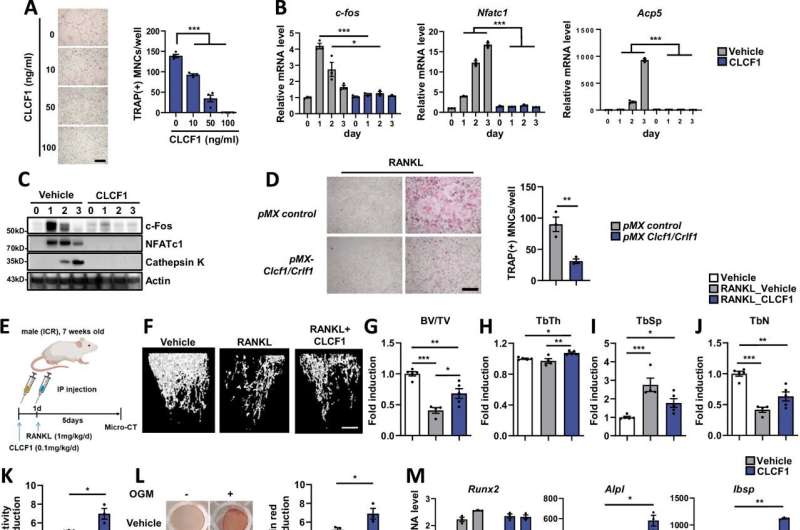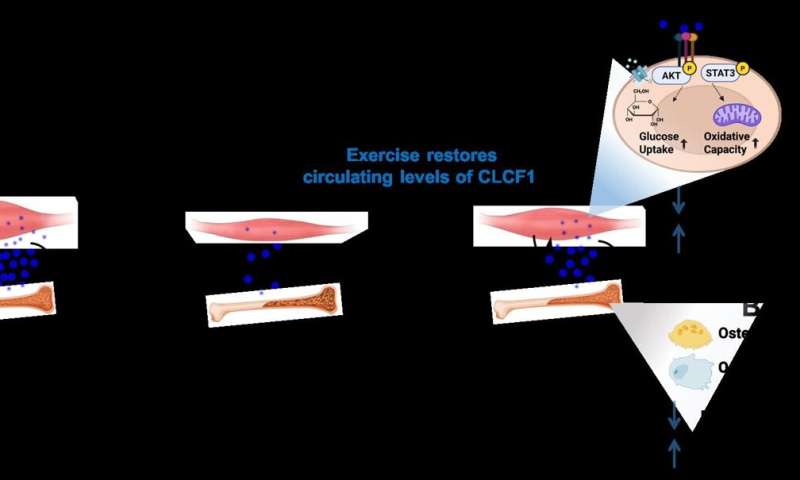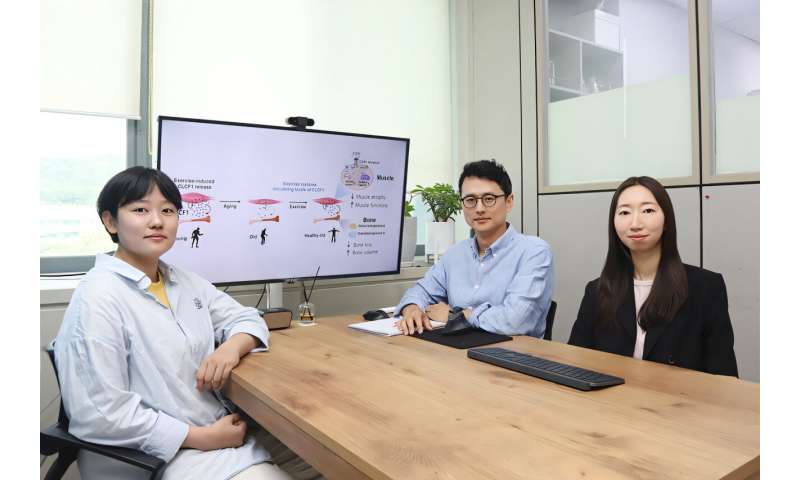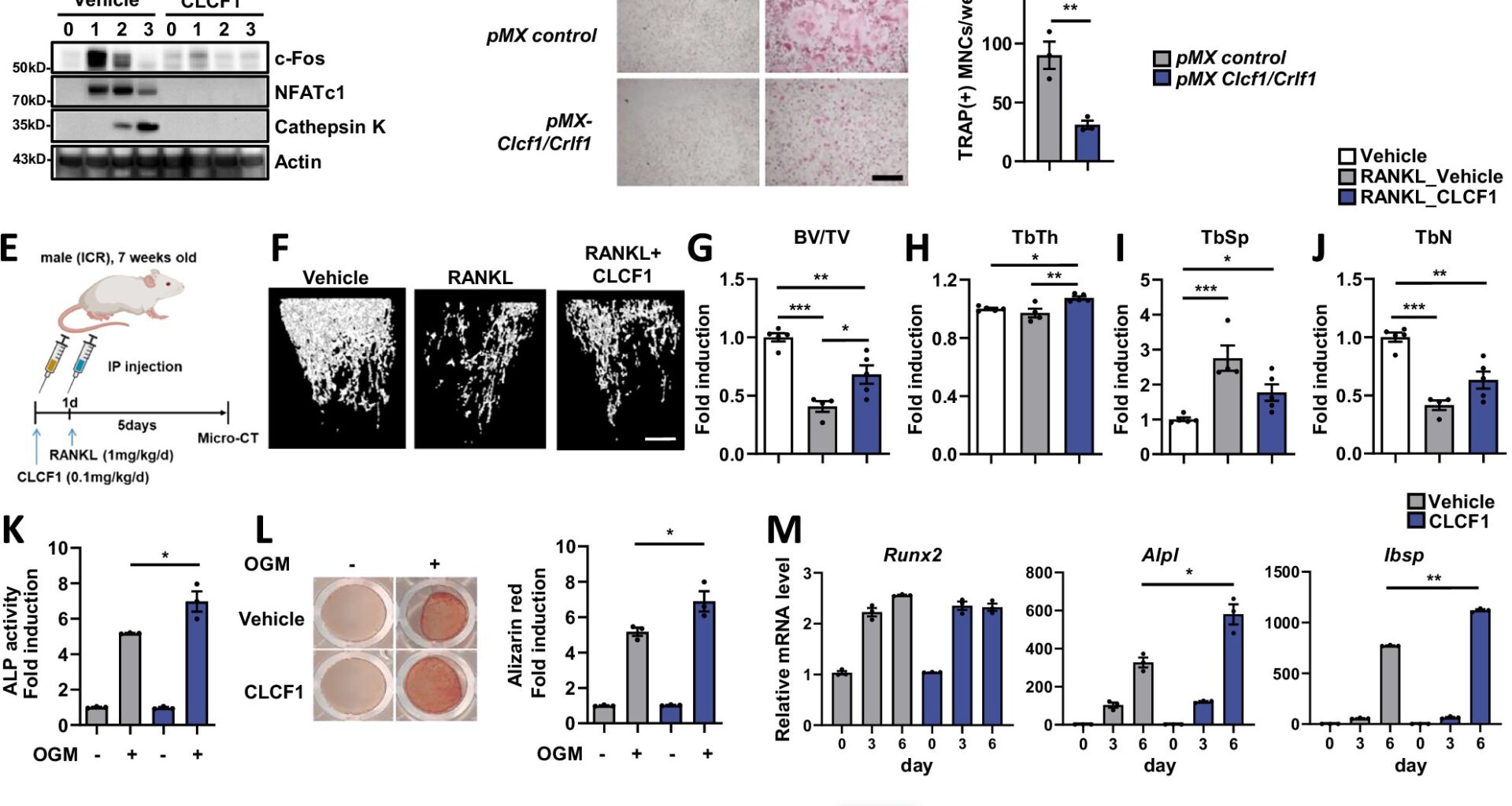
CLCF1 inhibits osteoclast differentiation and stimulates osteoblast differentiation. Credit: Nature Communications (2025). DOI: 10.1038/s41467-025-59959-w
“Exercise is good for your health” is a well-known phrase, but few people can clearly explain how and why it benefits the human body. A joint research team has discovered a key protein, CLCF1 (cardiotrophin-like cytokine factor 1), that plays a central role in mediating the health benefits of physical activity.
The work is published in the journal Nature Communications. The team was led by Dr. Yong Ryoul Yang of the Aging Convergence Research Group at the Korea Research Institute of Bioscience and Biotechnology (KRIBB, President: Seok-Yoon Kwon) and Professor Nak-Sung Kim of Chonnam National University.
The team found that CLCF1 is secreted by muscles during exercise, where it helps strengthen both muscles and bones, thereby suppressing musculoskeletal aging.
To understand how CLCF1 changes in response to exercise and aging, the researchers divided participants into young and elderly groups and monitored changes in blood CLCF1 levels after exercise. Interestingly, CLCF1 levels increased markedly after a single exercise session in the younger group, whereas in older adults, the protein only increased after over 12 weeks of continuous exercise.
-

An overview diagram of the study results : Exercise-Induced CLCF1 Reverses Age-Related Muscle and Bone Loss. Credit: Korea Research Institute of Bioscience and Biotechnology (KRIBB)
-

Group photo of the research team. Credit: Korea Research Institute of Bioscience and Biotechnology (KRIBB)
The team also conducted experiments on aged mice. When CLCF1 was administered to elderly mice, they showed improved muscle strength and increased bone density. In contrast, blocking the action of CLCF1 made exercise ineffective, confirming that this protein is essential for the beneficial effects of exercise.
Further analysis showed that CLCF1 enhances mitochondrial function in muscle cells, inhibits the formation of bone-resorbing osteoclasts, and promotes the differentiation of bone-forming osteoblasts. This is the first scientific evidence identifying changes in protein secretion as a major reason for the reduced efficacy of exercise in aging individuals.
Dr. Yang from KRIBB said, “This research provides a biological basis for why exercise becomes less effective with age, and it lays the groundwork for developing new therapeutic strategies for healthy aging. In particular, the findings offer new directions for treating age-related sarcopenia and osteoporosis.”
More information:
Jae Sook Kang et al, Exercise-induced CLCF1 attenuates age-related muscle and bone decline in mice, Nature Communications (2025). DOI: 10.1038/s41467-025-59959-w
Provided by
National Research Council of Science and Technology
Citation:
Exercise-induced protein revives aging muscles and bones, researchers discover (2025, June 20)
retrieved 20 June 2025
from https://medicalxpress.com/news/2025-06-protein-revives-aging-muscles-bones.html
This document is subject to copyright. Apart from any fair dealing for the purpose of private study or research, no
part may be reproduced without the written permission. The content is provided for information purposes only.
